Hydrogen peroxide is the first aid for any damage to the skin. Wounds and abrasions, cuts, if immediately after washing them are filled with peroxide, then the likelihood of suppuration will be minimal. The product is available without a doctor's prescription and is usually stored in every home in a medicine cabinet. But if handled incorrectly, this disinfectant solution can cause burns. In some cases, hydrogen peroxide can aggravate the condition and cause additional damage to the skin.
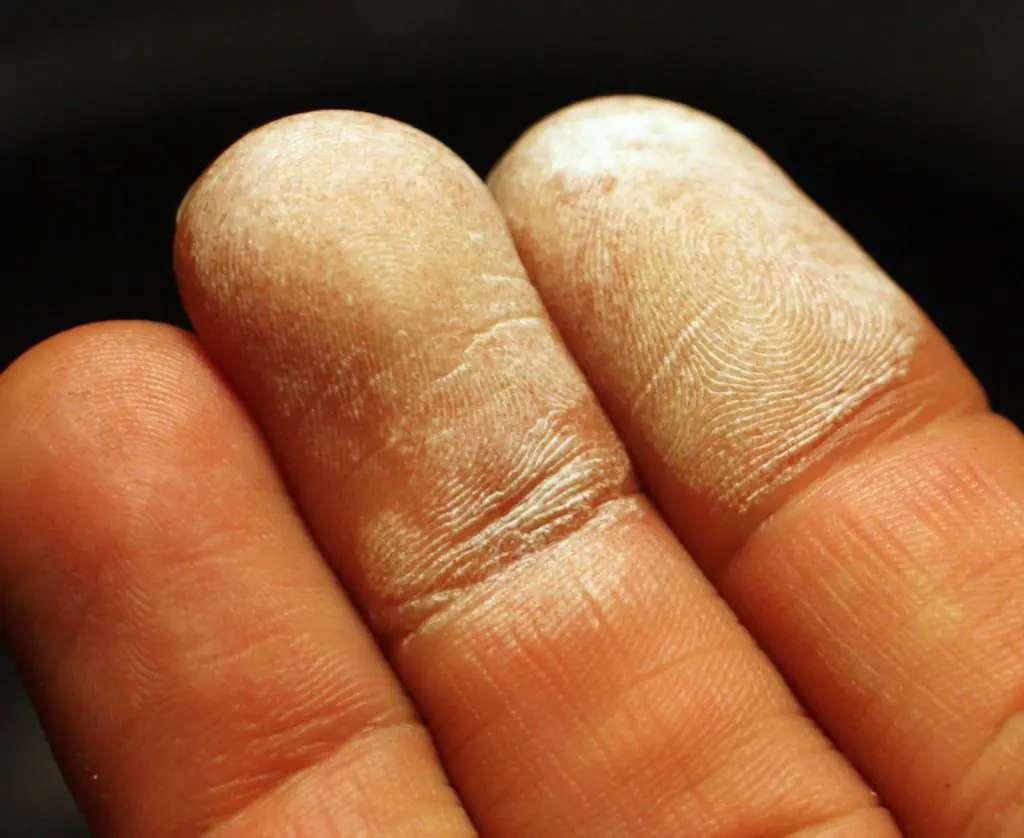
Properties of peroxide
The substance is called hydrogen peroxide. Thanks to a slight change in the formula, namely an additional hydrogen atom, this solution becomes an ideal assistant for surgeons. It has the ability to kill bacteria and quickly clogs blood vessels. This allows you to stop bleeding and preserve the body's strength.
It is almost impossible to get a burn from hydrogen peroxide at home. When it comes into contact with a wound, the solution reacts with biological fluids. As a result, oxygen is released and foam is formed. This is where the effect of the solution ends. Foam allows you to clean the wound from dirt and germs. That is, for the surgeon this tool became a real godsend.
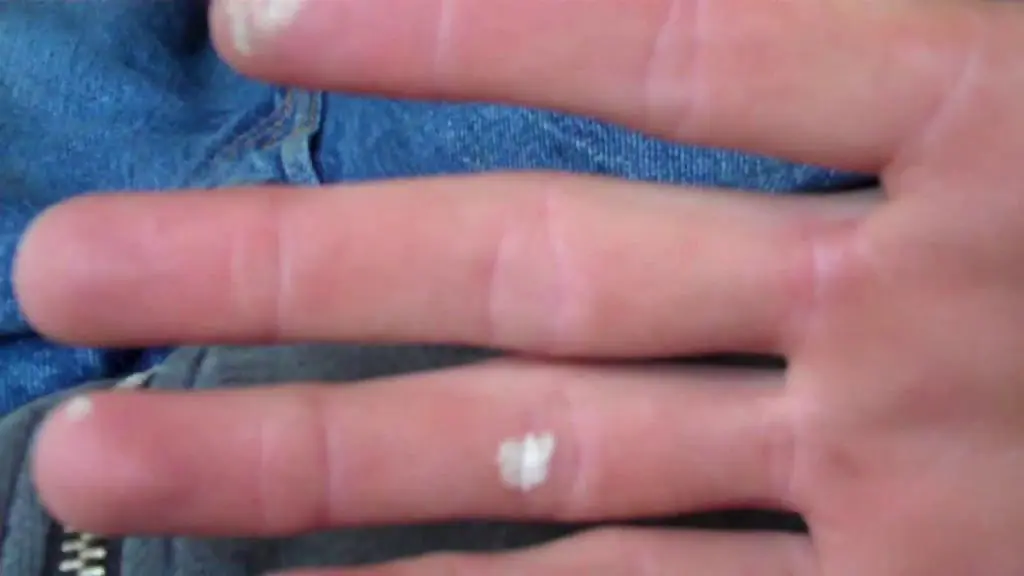
Application area
Hydrogen peroxide can be used for a variety of purposes:
- Cosmetic procedures, including the fight against age spots.
- Help with stomatitis.
- Cleansing the ears from wax plugs.
- Gynecological douching.
This list goes on and on. Almost every doctor uses this remedy in his practice.
Solution concentration
This is the key to solving this issue. If you are using a 3% solution, which is sold in pharmacies, then you don’t have to worry. Skin burns from hydrogen peroxide can only be caused if a concentrated solution is used. It comes in 6% and 10%, and is called a little differently - perhydrol. In this case, the lesions are mild and severe. Let's look at the general classification.
Degree of damage
- First degree is a small burn. Characterized by slight redness. If the size does not exceed the palm of your hand, then with proper care healing will occur in 1-2 weeks. This will not require additional medical intervention.
- The second degree is also considered mild, but in this case blisters with light contents, redness and swelling appear on the skin.
- The third degree is a deep lesion of the dermis. In this case, the situation is serious, so you need to immediately take the patient to a doctor.
- The fourth degree is a serious condition, which is characterized by necrosis, death and charring of tissue.
This is how hydrogen peroxide burns can be classified. What to do if the affected area is large and you observe severe redness? It is better to consult a doctor immediately. Third- and fourth-degree burns should be treated only in a hospital setting, under the supervision of a physician. It is impossible to treat such lesions at home; this is fraught with deterioration of the condition and general sepsis.
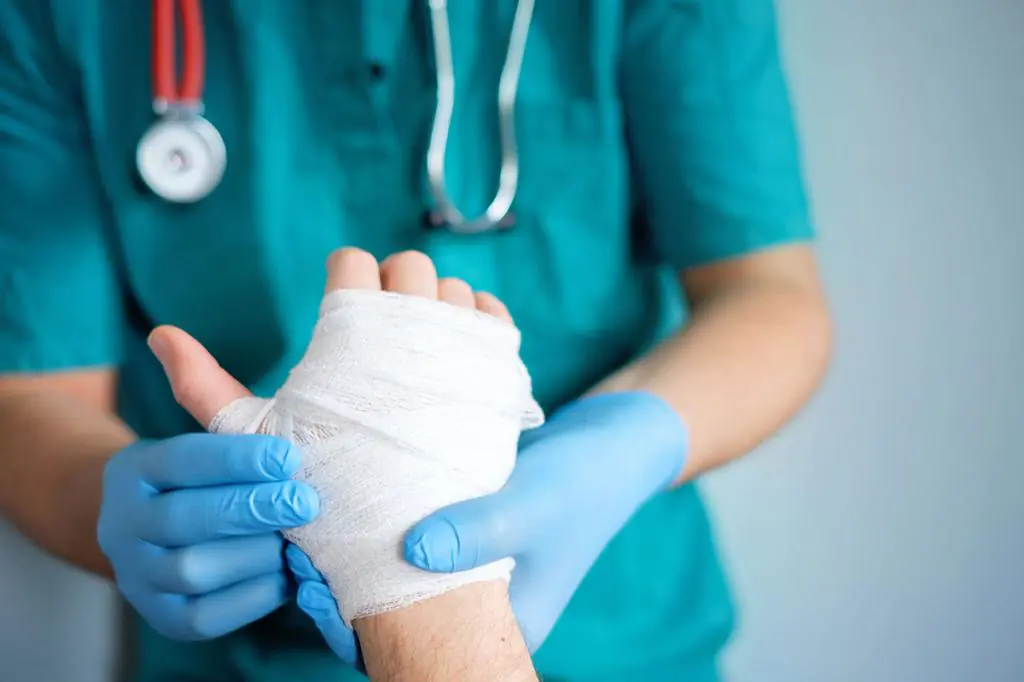
First aid
A burn from hydrogen peroxide can be very dangerous, so you need to neutralize the source of injury as quickly as possible. If the damage is external, then it is necessary to rinse the contact area under running water for at least 25 minutes. Only after this will it be possible to assess the patient's condition. If the injury is minor, that is, it is a 1st or 2nd degree burn, after washing it should be lubricated with Levomekol or Panthenol. You can use a compress of sea buckthorn oil or raw grated potatoes. Usually there is no scar left after this.
But if the affected area is large, then you need to immediately call an ambulance. While waiting for doctors, do not stop rinsing the affected area with water, since the oxidizing agent tends to penetrate inside. After the team arrives, the patient is transported to the hospital, where doctors will assess his condition and prescribe further treatment. Usually these are standard anti-burn agents, antibiotics and anti-inflammatory drugs.
Internal burns
It may be surprising, but children may not think so. Doctors are well aware that they can drink dishwashing liquid, acetic acid and much more. Peroxide is no exception. In case of internal burns of the larynx or stomach, you must definitely call an ambulance. If it was 3% peroxide, there is a chance you can do it with home methods. That is, give the patient water to drink and induce vomiting. After this, you need to give neutralizing substances. This could be milk or diluted lemon juice, a solution of potato starch with water. But you must definitely call an ambulance. If an oxidizing agent gets inside, only a specialist can determine what further measures need to be taken. If peroxide of a higher concentration has been ingested, the patient will need to be helped even faster.
Eye burn
If it was ordinary pharmacy peroxide with a concentration of 3%, then you can get by by rinsing your eyes with warm water. In this case, there is no great danger to the organs of vision. It’s another matter if the concentration was no less than 5-6%. In this case, a burn to the eye can lead to the most serious consequences, including complete loss of vision. First aid is to rinse the eye with warm water for a long time. Be sure to call a doctor, and before his arrival you can instill drops of "Levomycetin".
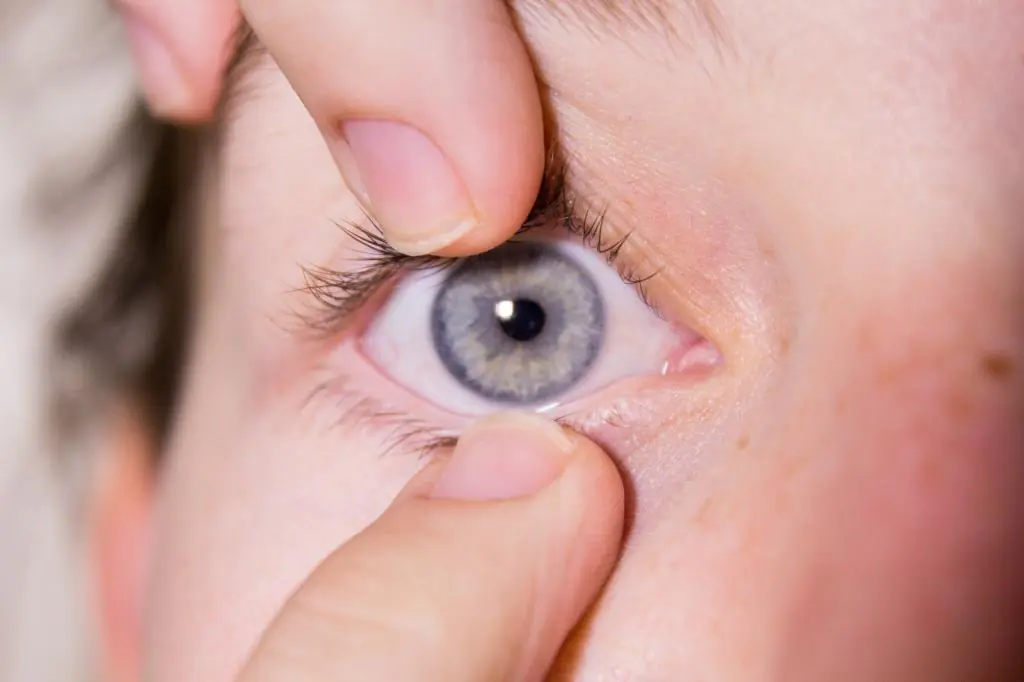
Thermal burns
This may be the result of exposure to boiling water. These types of home injuries happen very often, and you should be prepared to help your loved one. When you see damage to the skin, your first reaction may be to treat the wound with a disinfectant solution. This is correct, but it is not always worth choosing hydrogen peroxide for this. If you don’t have anything else at hand, you can take a 1% solution. After this, it is best to consult a doctor so that he can prescribe further treatment. Do not delay, since burns only at first glance seem to be ordinary wounds. In fact, they require competent medical support.
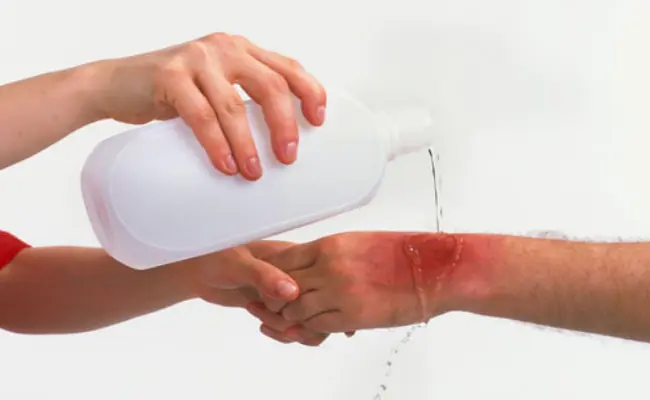
Bacterial contamination
Let's say you get a burn at a picnic. At the same time, you do not have any other first aid supplies with you. In this case, you can treat the burn with hydrogen peroxide. This will save the wound from infection. Otherwise, microbes may cause rot. But increasing the concentration is unacceptable, since the oxidizing agent itself can cause a burn. As a result, the patient's condition will rapidly deteriorate.
Can a burn be treated with hydrogen peroxide? It is possible, but only as a first aid solution. It is used exclusively to temporarily alleviate the condition and disinfect intact skin. After this, you need to get advice from a specialist.
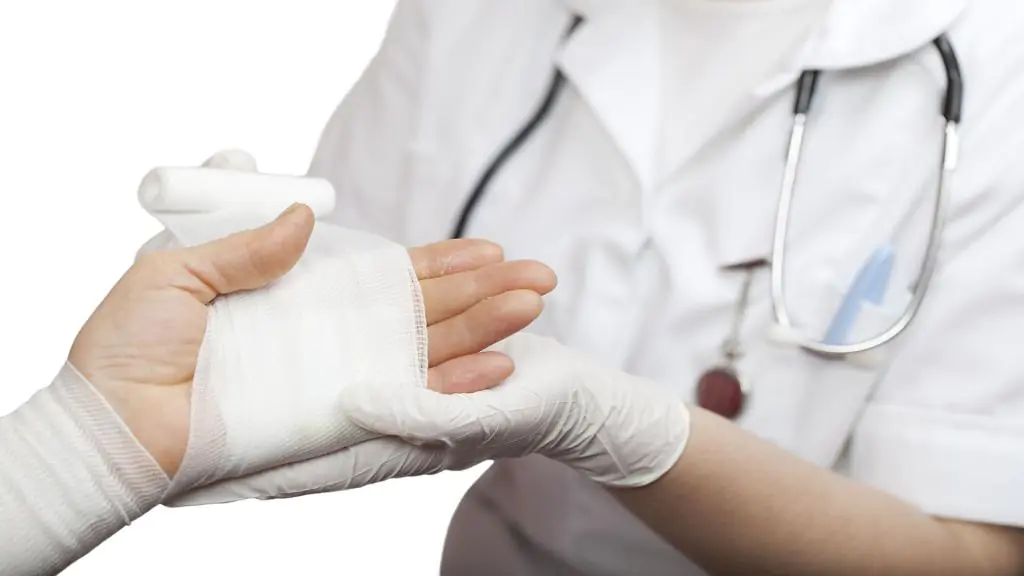
What to watch out for
Depending on the individual characteristics of the body, a severe allergic reaction may develop as a result of such initial treatment of the burn. In some cases, it will be expressed in the spread of the redness zone. If the reaction is severe, there may be loss of consciousness. Of course, we are talking about concentrated peroxide again. Using a 3% solution, you risk absolutely nothing.

Instead of a conclusion
Almost every home has hydrogen peroxide. Treat a burn, scratch, abrasion, cauterize the wound after squeezing out a pimple - it will be useful in any situation. Only the weakest solution can be used to treat a burn. But after this, you need to switch to using medications that heal the skin well. At the same time, we must not forget that the oxidizing agent itself can cause a burn. Therefore, we use peroxide only in minimal concentration and only for the initial cleansing of the surface of the wound. After this, consult your doctor so that he can prescribe an individual course of treatment. If the condition is severe, the patient will be admitted to a hospital. First and second degree burns can be treated at home using your doctor's recommendations.
Hydrogen peroxide is an oxidizing agent used in medicine and various industries. A 3% peroxide solution is actively used in everyday life, it disinfects wounds well and stops minor bleeding. If safety precautions are violated, especially when using highly concentrated solutions, there is a risk of getting burned by hydrogen peroxide. Treatment and prognosis depend on the location of the injury.
Causes
According to statistics, up to 5% of all chemical burns are caused by peroxide. They most often occur when ingesting a peroxide solution or exposing the skin to liquids with a reagent concentration above 10%.
The most dangerous is perhydrol - a liquid containing up to 35% hydrogen peroxide.
A hydrogen peroxide burn can have the following causes:
- working with concentrated solutions without protective equipment (gloves, goggles) in chemical, textile and other industries;
- storing the peroxide disinfecting solution in inappropriate places, for example, in direct access to a child;
- contact with a chemical when a storage container breaks;
- long-term exposure of a 6-9% solution of the product to the scalp when coloring hair;
- accidental ingestion when rinsing the mouth and gums;
- allergy to the substance.
Symptoms
Symptoms vary depending on the extent and location of the burn. The degree of damage is determined by the concentration and volume of the substance that gets on the skin or mucous membrane.
A skin burn with hydrogen peroxide is accompanied by redness (hyperemia) or discoloration of the burned areas, swelling and pain of varying intensity. At high concentrations of the substance, blisters appear on the skin, and some affected areas undergo necrosis. When severe injuries heal, scars form on the skin.
A burn of the oral cavity and pharynx is manifested by the following symptoms:
- swelling of the affected area;
- blanching of the burn area, which clearly distinguishes it from the background of healthy tissue;
- severe pain (when the reagent concentration is above 6% for the oral cavity and more than 10% for the pharynx).
In severe cases, areas of wet necrosis appear in the mouth. Under the influence of peroxide, the mucous membrane becomes loose, which promotes deeper penetration of the reagent and further expansion of the affected area. Scars after healing of the oral cavity are more massive than with damage to the skin.
Ingestion of hydrogen peroxide causes burns to the esophagus and stomach, causing swelling, stenosis of the upper gastrointestinal tract and severe pain. As a rule, burns of internal organs are combined with lesions of the skin near the lips, mucous membranes of the mouth and pharynx.
Both concentrated hydrogen peroxide and a harmless pharmaceutical solution can burn the cornea of the eye.
Contact with 3% peroxide causes irritation of the eye mucosa, photophobia and excessive lacrimation. The patient feels a burning sensation in the cornea, and vision temporarily deteriorates.
With more severe burns, the cornea becomes cloudy, and the burning sensation turns into a full-fledged pain syndrome. The intensity of the pain increases over several hours. The affected eye swells and turns red in the conjunctival area. When exposed to perhydrols and technical peroxide solutions, ulcers and perforation areas form on the structures of the eye.
In terms of the specific action on mucous membranes, hydrogen peroxide is similar to alkalis. These substances penetrate deeply into tissues and cause severe damage. In case of a corneal burn, the prognosis for several days after the injury worsens compared to the initial one.
First aid in case of defeat
Competently and timely first aid significantly improves the prognosis and shortens the healing time of skin and mucous membrane injuries. It is especially important to quickly remove the reagent from the affected area in case of burns to the eyes and internal organs..
For skin burns, the following measures are effective:
- Rinse the affected area with plenty of water. Performed no later than half an hour after injury.
- Using neutralizing agents (weak acid solutions) for rinsing after removing the reagent from the skin surface.
- Apply a sterile dry bandage to the injured area.
Hydrogen peroxide is not an alkali, but in a neutral and alkaline environment it is reduced to alkaline compounds, which can aggravate the burn, so acids are used to neutralize it. To prepare the solution, mix water and a few drops of lemon juice.
Please note that peroxide can only be removed from the skin with water. Cotton wool, napkins, sponges further rub the reagent into the damaged epidermis.
If you burn your mouth or pharynx, rinse the affected area with plenty of water and consult a doctor.
If it is impossible to provide timely medical care after washing with severe pain, anesthetic solutions and applications are used. It is prohibited to use traditional methods without consulting a doctor.
If peroxide gets into the gastrointestinal tract, you must immediately call an ambulance and resort to gastric lavage. Before the medical team arrives, you should drink 300-350 ml of 1% sodium thiosulfate and induce vomiting by pressing on the root of the tongue.
Sorbents, starch solution, warm tea, still water and milk will help neutralize the effects of the reagent.
Upon arrival of the ambulance team, it is necessary to inform the doctor of the concentration of peroxide, the estimated volume of the reagent drunk and the list of actions taken.
For corneal burns, it is not recommended to independently treat the damage with a neutralizing solution. If your eyes are affected, do the following:
- Rinse the cornea thoroughly with water without using napkins, sponges or other devices. It is very important to keep the injured eye open during the procedure.
- After rinsing, close your eyes with a dry sterile cloth and go to the emergency room or emergency department of an ophthalmology hospital.
If it is impossible to quickly provide medical assistance, you can instill drops with antibacterial and analgesic effects. As a rule, the active ingredients of the drug are chloramphenicol and lidocaine.
Treatment
Treatment of burns with hydrogen peroxide includes several stages:
- Neutralization and removal of the chemical reagent from the affected area.
- Detoxification and restoration of normal water-salt balance in the body (for internal burns).
- Symptomatic treatment.
- Rehabilitation measures that stimulate healing and restoration of damaged tissues.
Drug therapy for hydrogen peroxide burns may include the following drugs:
- for skin lesions - Panthenol, Levomekol, Metrolavin, ointments and sprays with lidocaine;
- for eye burns - Inocaine, Alcaine, Levomycetin;
- for burn swelling of the throat - aerosol forms of novocaine with ephedrine or adrenaline, Prednisolone;
- for internal burns - a dropper with sodium bicarbonate (for acidosis), Cordiamin and Caffeine (for cardiovascular failure caused by injury), Atropine, Papaverine, Platiphylline (for burn shock), hormonal anti-inflammatory drugs (Prednisolone).
As supportive treatment, injections of B vitamins and antioxidants are used, as well as physiotherapy (electrical stimulation, magnetic therapy, franklinization, ultraphonophoresis, enzyme electrophoresis).
In case of severe lesions, tissue plastic surgery or removal of part of the organ is necessary.
It is recommended to use traditional medicine methods only at the rehabilitation stage. The following remedies are useful for restoring skin and mucous membranes after burns with peroxide:
- compresses with sea buckthorn oil and an oil solution of vitamin E (1-2 drops per 2 tablespoons of base oil);
- applications with strong black tea, infusion of coltsfoot or oak bark (2 tablespoons of plant material per 1 glass of boiling water);
- washing with infusion of birch leaves and buds (1 tablespoon per 1.5-2 cups of boiling water);
- compresses for eyelids with infusion of clover flowers (1 tablespoon of dry raw material per 200 ml of boiling water);
- rinsing with a decoction of oak bark (1-2 tablespoons per 200 ml of boiling water) or chamomile (1 tablespoon per glass of hot water).
Prevention
In order to prevent burns, it is necessary to follow safety rules when handling hydrogen peroxide:
- it is prohibited to pour pharmaceutical and concentrated peroxide solutions into containers for drinks and food, as well as into bottles without markings indicating the substance and its concentration;
- the product must be stored in places inaccessible to mentally ill and young family members;
- Perhydrols and other saturated solutions of substances should not be kept near places for preparing and storing food;
- when contacting peroxide with a concentration above 6%, it is necessary to use protective gloves, and when constantly working with the reagent, goggles;
- immediately after use, carefully seal the container with the substance;
- It is not recommended to use traditional methods of treatment that involve ingesting an antiseptic even in minimal concentration.
Ingestion, prolonged contact with the substance and careless handling of concentrated solutions of the reagent are the most common causes of burns. By following safety rules, the likelihood of injury is reduced, and only allergy sufferers and people with hypersensitive skin (for example, with atopic dermatitis) remain at risk.
Hydrogen peroxide is an emergency drug for cuts, abrasions, and minor bleeding. Dispensed without a doctor's prescription in glass or plastic containers in a concentration of 3%. If used incorrectly, there is a risk of getting burned by hydrogen peroxide.
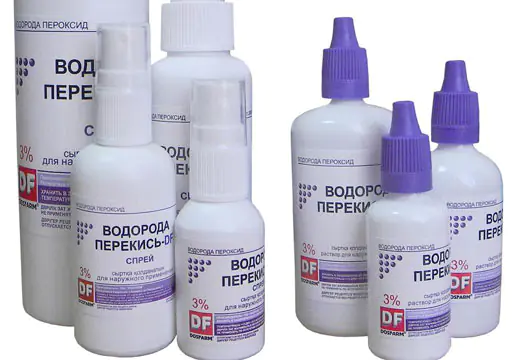
Properties and action of peroxide
Thanks to one additional hydrogen atom, peroxide (hydrogen peroxide) has the ability to disinfect wounds, kill pathogens and clog blood vessels, which helps stop bleeding. During the chemical reaction, oxygen is formed - a white hissing foam appears on the surface. It cleanses the wound of debris, dead cells, pus, and microbes. The areas of application of hydrogen peroxide are extensive:
- disinfection of wounds and abrasions;
- rehabilitation for purulent lesions of the nasopharynx;
- stopping capillary bleeding, including from the nose;
- rubbing the skin to remove age spots;
- rinsing the oral cavity for stomatitis, periodontal disease and other diseases of the mouth and throat;
- deodorant;
- soaking wax plugs in the ears;
- teeth whitening;
- gynecological douching.
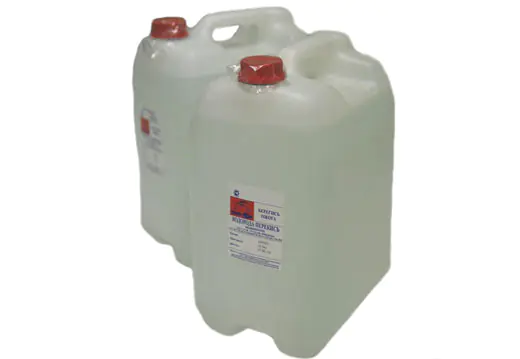
Contraindications for the drug include hypersensitivity to its components. It is forbidden to inject it into deep wounds.
Types and degrees of burns with hydrogen peroxide
In everyday life, when using 3% hydrogen peroxide, it is impossible to get a burn to the skin. You can get burned with a concentrated solution of peroxide 6-10% or higher. The concentrate is called perhydrol and is used in production - it accounts for about 5% of chemical injuries. All burns in medicine are classified according to the degree of tissue damage.
- The first degree is characterized by a small affected area and slight redness of the skin.
- The second degree is indicated by blisters on the burned area with light contents in them, redness and swelling.
- With a third-degree chemical burn, the deep layers of the dermis are damaged, crusts form on the wound, under which scar tissue forms over time.
- The fourth degree is assigned to injury in case of deep damage to the skin, subcutaneous fat, and muscles. The charred tissue dies and the color of the wound turns black.
If a first or second degree skin burn occurs and its size does not exceed the palm of your hand, such an injury will heal within 1-2 weeks with proper care without medical intervention.
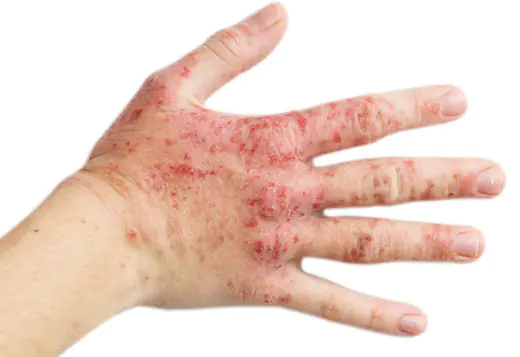
First aid
First aid for a burn consists of removing and neutralizing the source of injury. If the damage is external, it is necessary to rinse the wound with running water at room temperature for at least 20 to 25 minutes. After washing, 1st and 2nd degree burns must be lubricated with Panthenol or Levomekol. You can use other pharmaceutical products or a compress of sea buckthorn oil. After such injuries, as a rule, no scars remain.
For an external chemical burn of 3 or 4 degrees, first aid should consist of washing the injured area with running water at room temperature. It is better to increase the duration of rinsing; the oxidizing agent tends to penetrate deep into the tissues. At the same time, it is necessary to call an ambulance and transport the victim to the hospital. There they will assess the patient’s condition and carry out the necessary medical procedures. Before doctors arrive, you can cover the wound with a clean, lint-free cloth soaked in cool water, and take painkillers Ibuprofen or Paracetamol. You cannot smear or treat the wound yourself.
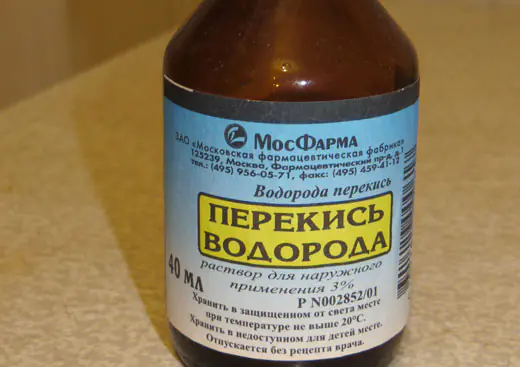
For internal burns of the mouth, larynx, and stomach, first aid will consist of gastric tube lavage and calling an ambulance. If ingestion occurs, the substance must be removed to minimize the consequences. Give the victim water at room temperature and try to induce vomiting. Afterwards, give neutralizing liquids to drink: milk, diluted lemon juice, a solution of citric acid or potato starch with water. It is imperative to call an ambulance or visit a medical facility yourself if an oxidizing agent gets inside.
Eye burns from hydrogen peroxide can lead to serious consequences, including loss of vision. First aid if it gets on the eye mucosa is to rinse for a long time with running water and seek medical help from a doctor. Before his arrival, drop Levomycetin or Lidocaine drops into your eyes.
Further treatment
For a simple burn from hydrogen peroxide, local treatment can be carried out aimed at relieving symptoms and pain. To prevent mechanical injuries to the burned surface, a bandage can be applied to the wound. In case of 2nd degree burns, you should not open the blisters yourself, so as not to introduce an infection under the skin and prevent the appearance of scars. Severe 3rd and 4th degree burns are treated by doctors. Self-activity is unacceptable.
Possible complications and precautions
Any injury can leave a mark on the human body. A severe burn with peroxide when ingested in large quantities causes acidosis, disturbances in the functioning of the kidneys and metabolism. With prolonged use of peroxide for rinsing the mouth, the papillae of the tongue hypertrophy. The danger of eye burns is deterioration or loss of vision. Deep injuries to the skin cause the formation of excess connective tissue and scars that will remind you of the accident for the rest of your life. To avoid unpleasant consequences, you should follow simple rules:
- keep the product out of the reach of children;
- buy a drug for home use with a concentration of no more than 3%;
- do not pour liquid into bottles from other products;
- Use with caution on the face and around the eyes;
- in production, when working with hazardous substances, use chemical protective equipment;
- do not take the drug orally, despite the fact that some adherents of traditional medicine recommend this method for treating diseases.
If, while using the drug, the skin begins to itch or redness occurs, treatment of the wound should be stopped. In some cases, the surface may turn white from the use of an antiseptic, which also indicates the inadmissibility of using the drug. The speed of the patient’s recovery depends on the degree of injury; it is important to quickly provide the victim with competent first aid and prevent serious consequences.



